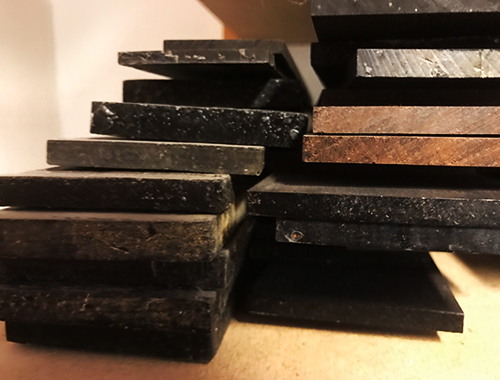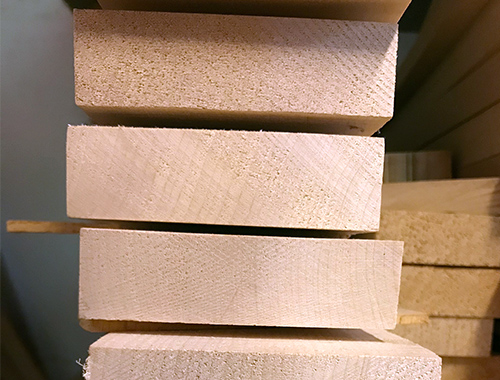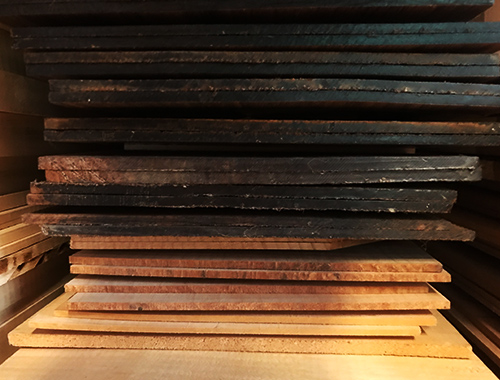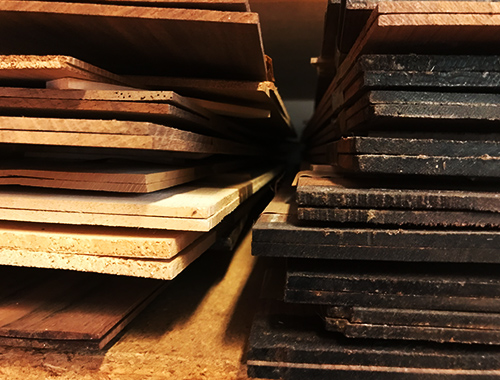
Tonewoods
Musical instrument makers and physicists have been studying the acoustical properties of wood for many years. They have determined that different species of woods sound out differently when struck or vibrated. For this reason, wood selection is critical for the best sound out of an instrument. It was discovered that the age of the wood affects the sound as well. That's why it's important to find just the right piece of wood to get the best sound.
For me, after many attempts, spruce has prevailed as the best wood for soundboards. I use European and Caucasian spruce. The latter has a very percussive sound and adds more colour for the final instrument.
The choice of wood for the body is also of great importance, rosewood results in a vibrant sound, walnut results in beautiful warm sounds, whereas maple is very unique, and is somewhere in between.
Pitch
Different types of wood have different densities. For example, spruce is a lighter density wood than maple. The density of the wood affects how sound waves travel through the wood. Lower-density woods absorb higher-frequency sound waves more than lower-frequency sound waves. The end result is that when you hit it, only deeper sound waves come out. Conversely, higher density woods allow higher tones to escape but trap lower tones. For this reason, many builders prefer spruce for soundboards but other woods for the body.


Reflection
In general, softer woods absorb sound waves more than harder woods. The end result is that sounds come out muffled from a softwood but brighter from a hardwood. This is neither good nor bad, but the sound changes depending on the type of wood. That's why you use a soft wood for soundboards and hardwoods like maple for the back and sides. The sound waves emanating from above are reflected from the underside. Highly reflective hardwood is chosen for the back so that maximum volume will come out of the sound hole.
Resonance
Every sound makes wood vibrate. Within a certain narrow frequency range, the wood vibrates very strongly. This is resonance, and each piece of wood resonates at different frequencies. Even within the same species, two different boards can have different resonant qualities. Instrument makers listen while tapping the wood to find out the best resonance characteristics and tonal qualities of a particular piece before using it for a specific instrument.


Age
Old musical instruments somehow sound "better" than new musical instruments. The age of the wood greatly affects the acoustic properties. Researchers have found that as wood ages, the inner sap hardens. This affects the sound emitted or reflected by the wood. Another reason is moisture content and how old wood absorbs moisture from the air differently than younger wood. Hemicellulose, a component of wood, degrades over time and as it decomposes, the internal moisture content decreases, which in turn affects acoustic properties.
